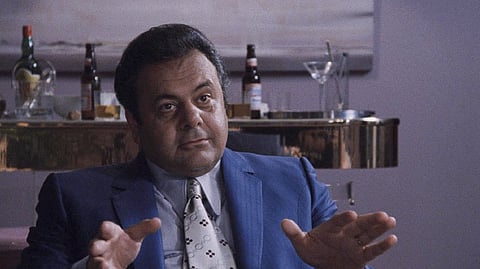

Glenn Kenny
When Paul Sorvino was offered the role of Paulie Cicero, the Queens-based mob underboss in Martin Scorsese’s “Goodfellas” (1990), he very much did not want to accept it. In the first place, he was a proud Italian American. A connoisseur of Italian culture, particularly food and music, he was not inclined to play a Mafioso. In addition, Sorvino, who died Monday at 83, was a voluble guy, and he liked playing voluble guys. Paulie was largely a brick. Much is made in the early scenes of the movie about how most of the criminal’s directives were executed with a mere nod.
He accepted the role anyway and went into rehearsals. A few days before shooting began, he called his agent and asked if he could bail. At a 2015 panel at the Tribeca Film Festival commemorating the 25th anniversary of “Goodfellas,” Sorvino poked a little fun at people who complimented him on his “choices” in what became one of his signature roles. He scoffed at the idea of “choices,” insisting: “I found the guy and the guy made the choices.”
“It was very difficult,” Sorvino told the panel moderator Jon Stewart. “I’m a poet, I’m an opera singer, I’m an author … none of it is gangster.” But then, for Sorvino, came a moment. In his telling at this panel, it was when he was straightening his tie. In other recountings, he was removing a bit of spinach from between his teeth. In both versions, Sorvino looked in the mirror. And there was a fixed scowl meeting him.
“I saw this guy.” And that was it.
Sorvino’s vision of Paulie was an incredibly nuanced portrayal of a man who, on the page, comes across as simple and as unpleasant as sudden death. In “Wise Guy,” the non-fiction book that was the basis of “Goodfellas,” the author Nick Pileggi wrote, “It was understood on the street that Paul Vario” — the mobster’s surname was changed for the movie — “ran one of New York’s toughest and most violent gangs.” In the Brownsville-East New York area of the city, “the body counts were always high, and in the 1960s and 1970s the Vario thugs did most of the strong-arm work,” Pileggi explained, adding later, “There were always some heads to be bashed on picket lines, businessmen to be squeezed into making their loan-shark payments, independents to be straightened out over territorial lines, potential witnesses to be murdered, and stool pigeons to be buried.”
Vario, then, was a middle manager of mayhem. Sorvino played him as a guy who kept his cool and tried to keep his underlings in line.
Much of “Goodfellas” is devoted to how three underlings, played by Ray Liotta, Joe Pesci and Robert De Niro, did not stay in line. Paulie can be a tolerant and affectionate “dad.” Sorvino uses his natural warmth when greeting “good earner” Jimmy (De Niro) at a back-room casino early in the movie. Later, overseeing elaborate dinners in prison, he has a special system for slicing garlic, and once his cellmate Henry (Liotta) enters bearing wine and Scotch, he proclaims, “Now we can eat.” Presiding over a celebration of Henry’s release from the joint, he’s Uncle Paulie.
In 2018 the world learned how passionate Sorvino could be offscreen. Responding to revelations of abuse and blackballing that his daughter, the actor Mira Sorvino, endured at the hands of disgraced mogul Harvey Weinstein, Sorvino told TMZ he hoped Weinstein would do jail time: “Because if not, he has to meet me.” Sorvino then related in no uncertain terms what would happen.
The role of a proud father driven to indignant, justified rage was one that suited this performer well enough. But one wishes that he hadn’t been obliged to live it.
Visit news.dtnext.in to explore our interactive epaper!
Download the DT Next app for more exciting features!
Click here for iOS
Click here for Android